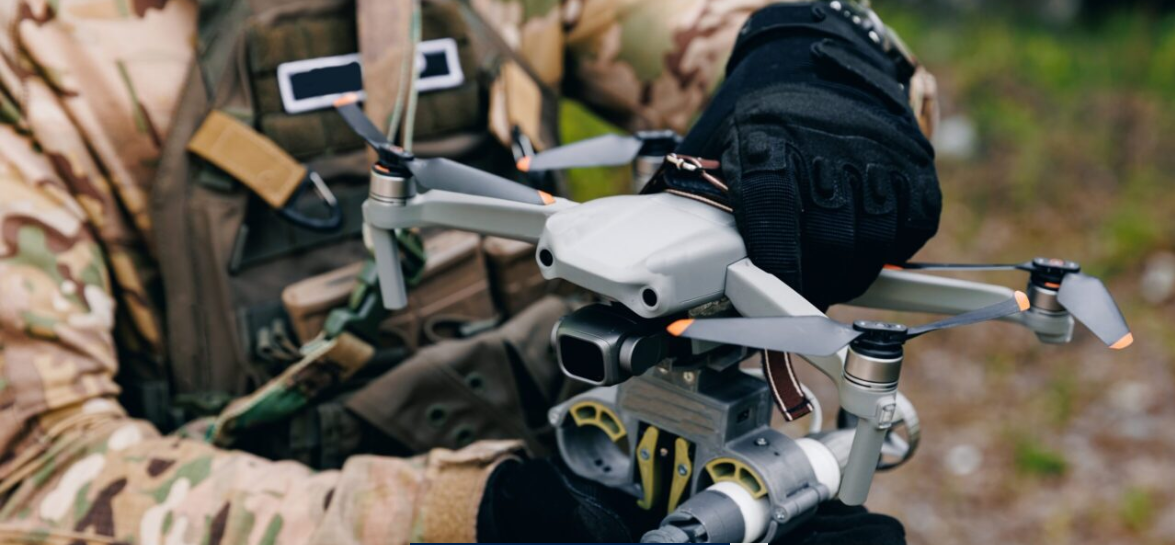U.S. Moves to Purchase Ukrainian Battlefield Drones

Ukrainian operations have revealed the ubiquitous nature of cheap drones and their effectiveness in modern warfare.
United States military representatives recently welcomed a delegation from the Ukrainian Ministry of Defense and the National Security and Defense Council to discuss a long-term deal for procuring Ukrainian battlefield drone systems. Specifically, the Ukrainian delegation presented system capabilities, procurement possibilities, and integration into American structures and operations.

The American delegation included representatives from each branch of the armed services. They looked at specific drone models, their operational capabilities and effectiveness, and potential battlefield applications. Ukrainian systems support for US military needs was also discussed.
America Is Playing Catch-Up on Drones
The meeting comes as the United States rushes to address its deficiencies in drone warfare and counter-drone defensive systems. Secretary of War Pete Hegseth last summer announced a major initiative to address those deficiencies in a memorandum titled “Unleashing U.S. Military Drone Dominance,” which was based on President Donald Trump’s executive order of the same name.
The memorandum emphasizes a far-reaching approach, involving private industry as well as allied nations, to jump-start American drone capabilities for the modern battle space. Ukraine has necessarily become one of the world’s leading experts on drone warfare as it combats the ongoing Russian invasion. US drone initiatives are in progress, but outsourcing to Ukraine for proven systems, as well as the doctrine and operational expertise for their use, makes sense.
The Ukrainian Ministry of Defense described the meeting as a preparatory step toward a broader deal. That broader proposed deal would be for the United States to purchase Ukrainian-built drones while implementing joint production of some models. Dubbed the “Drone Deal” by Ukraine, the agreement would span five years. Initial plans go beyond procurement and deployment and envision technical cooperation, integrating Ukrainian technology into American and allied systems and establishing production scales to meet changing operational requirements.
A Mutually Beneficial Agreement
Implementation would benefit both nations. The United States would significantly upgrade its drone capabilities with proven systems in a much shorter time than if that capability were developed purely domestically. The Ukrainians noted that the American team expressed interest not only in unmanned aerial vehicles but also in naval drones and ground-based robotic systems.
Ukrainian president Volodymyr Zelenskyy is prioritizing the export of certain weapons systems that have proven effective in the Ukraine war. Those exports to allies and partners would infuse cash into the Ukrainian defense industry, driving further innovation and capacity for Ukraine’s own needs. Zelenskyy has stated that he especially wants to further develop weapons and systems to target Russia’s military infrastructure.
Zelenskyy’s desire to increase weapons exports is partially driven by overproduction. He noted that several weapon types, including naval drones and anti-tank weapons, are currently classified as surplus because they aren’t needed in the volume produced. Offloading that surplus onto foreign buyers seems a wise policy. Ukraine reportedly has or is pursuing export agreements with the United States, Europe, and certain Middle Eastern and African nations.
These agreements also benefit Ukraine strategically. Integrating Ukrainian systems into foreign militaries, particularly those of Europe and the United States, creates ties that will be difficult to sever, especially as international tensions rise. Military and technological connections could eventually lead to broader economic ties, further aligning Ukraine with the West. That alignment could potentially pay dividends for Ukrainian security as a necessary by-product.
Turning back to the United States, the Ukraine war has exposed the years-long American neglect of unmanned combat systems. Ukrainian operations have revealed the ubiquitous nature of cheap drones and their effectiveness in modern warfare. The United States has seemingly embraced the necessity of drones, as evidenced by Hegseth’s July memorandum.
But catching up to Russia, China, and Ukraine will take work and investment. It will also require innovative policies like talking to and working with people who have the experience America lacks. Those people are the Ukrainians. Materially supporting Ukraine has sometimes been controversial. The United States, however, may now be getting a return on its investment. That return may directly influence how America is positioned to deal with China, Russia, or any other future adversary.
- Questions and Answers
- Opinion
- Motivational and Inspiring Story
- Technology
- True & Inspiring Quotes
- Live and Let live
- Focus
- Geopolitics
- Military-Arms/Equipment
- Segurança
- Economy/Economic
- Art
- Causes
- Crafts
- Dance
- Drinks
- Film/Movie
- Fitness
- Food
- Jogos
- Gardening
- Health
- Início
- Literature
- Music
- Networking
- Outro
- Party
- Religion
- Shopping
- Sports
- Theater
- Health and Wellness
- News
- Culture

